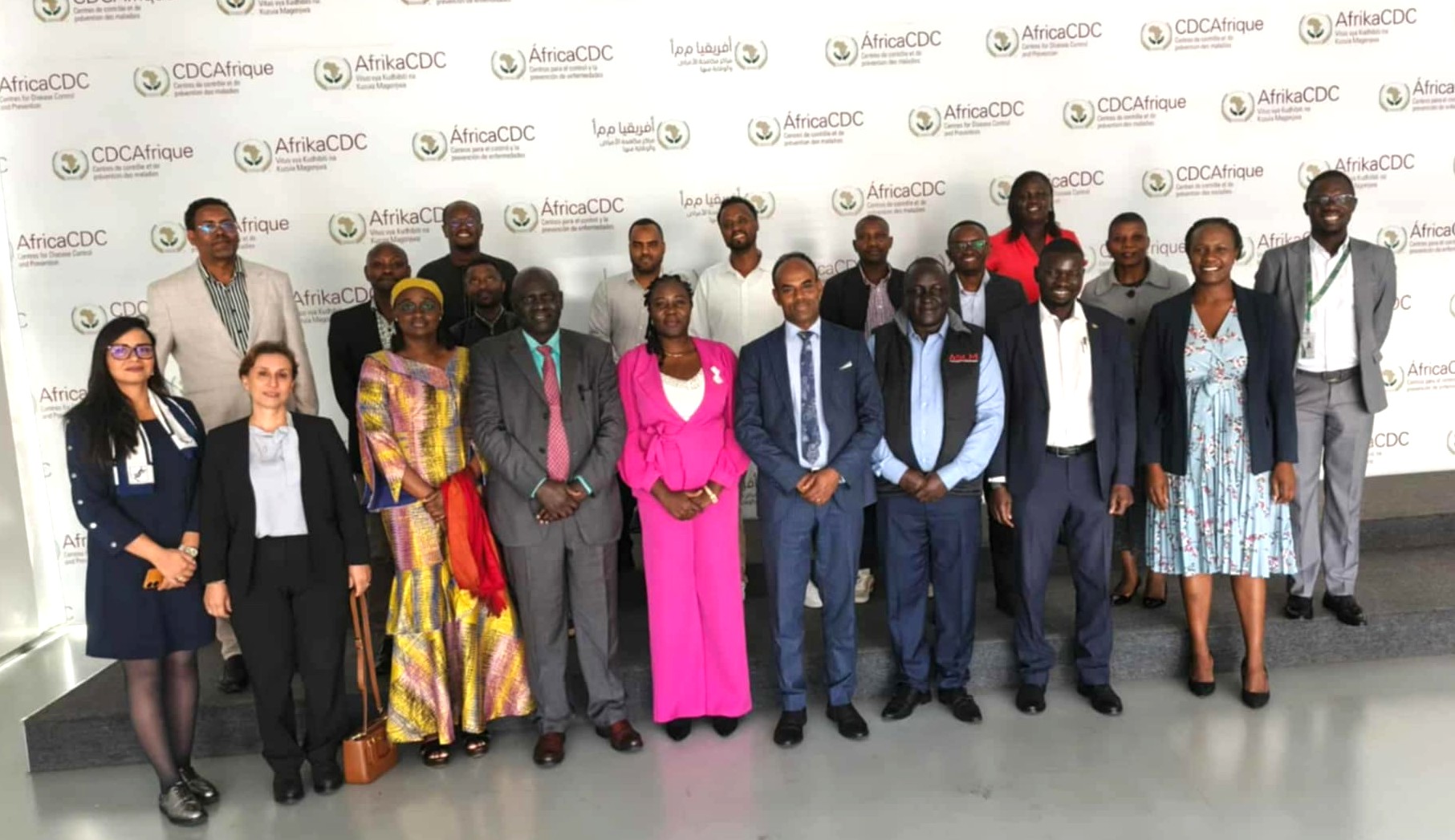 From 8-12th September 2025, Africa CDC and ASLM partnered with seven Member States to conduct a laboratory capacity gap analysis using LabMap data in Addis Ababa, Ethiopia. The analysis reviewed testing capacities in tertiary public laboratories against national diagnostic needs for priority diseases including Ebola, Marburg, Mpox, Cholera, Meningitis, Influenza, Measles, Anthrax, Rabies, Tuberculosis, and HIV. It engaged 18 participants, including officials from Ministries of Health, National Public Health Institutes, and Animal Health and Food Safety authorities from Zambia, Tunisia, Ghana, Uganda, Mozambique, Ethiopia, and Cameroon.
From 8-12th September 2025, Africa CDC and ASLM partnered with seven Member States to conduct a laboratory capacity gap analysis using LabMap data in Addis Ababa, Ethiopia. The analysis reviewed testing capacities in tertiary public laboratories against national diagnostic needs for priority diseases including Ebola, Marburg, Mpox, Cholera, Meningitis, Influenza, Measles, Anthrax, Rabies, Tuberculosis, and HIV. It engaged 18 participants, including officials from Ministries of Health, National Public Health Institutes, and Animal Health and Food Safety authorities from Zambia, Tunisia, Ghana, Uganda, Mozambique, Ethiopia, and Cameroon.
The gap analysis identified key weaknesses: limited adoption of cost-effective technologies like multiplex testing and genomic sequencing, fragmented and siloed surveillance systems, lack of standardized protocols and indicators, poor specimen referral networks, and weak information-sharing platforms across One Health sectors. In response, Member States developed a surveillance capacity strengthening workplan through their National One Health Technical Working Groups. This plan calls for wider use of priority diagnostic tests, integration of multiplex testing protocols, procurement of PCR reagents for existing platforms, improved laboratory tools and standard operating procedures, optimized sample transport routes, development of real-time data dashboards, training in outbreak analytics, and alignment of reporting with WHO and Africa CDC early warning systems. If implemented, the plan is expected to significantly enhance real-time surveillance capacity and improve Member States’ performance in WHO Joint External Evaluations.
At the same time, Africa CDC and ASLM completed a major review of the LabMap data collection tool, the third update since 2018. The revision was driven by the new framework’s emphasis on One Health, emerging and remerging disease outbreak, sustainable data collection, and institutionalization within national structures. Experts from human, animal, and environmental health sectors worked together to refine the tool, addressing previous weaknesses such as excessive length, insufficient completion guidance, and limited coverage of animal and environmental health. The updated version aligns with national tier systems, incorporates clearer guidance and standard definitions, and strengthens coverage of all One Health domains.
The revised tool will ensure higher-quality, comparable data across Member States, facilitate sustainable adoption, and support the framework’s annual update cycle. This will enable Africa CDC and partners to better track progress, optimize laboratory systems, and strengthen surveillance capacity. The updated data collection tool will be rolled out in January 2026.
Together, the newly developed GIS LabMap framework, the capacity gap analysis, and the updated data collection tool represent a significant step forward for laboratory systems strengthening in Africa. These milestones will not only enhance early disease detection and outbreak response but also reinforce the continent’s commitment to a One Health approach and global health security.

